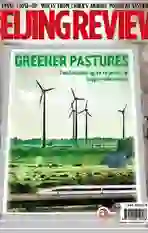Supply-Side Reform Continues
2017-04-10
To solve such problems as overcapacity and supply imbalance, the Chinese Government started implementing supply-side structural reform in 2016. The reform featured cutting ove rcapacity, destocking and deleveraging. Corporate costs were reduced and weak spots shored up. The result was a phased victory.
Last year, China reduced 65 million tons of excessive capacity in steel production. The fi gure for coal was 290 million.
However, given the size of Chinas huge economy, one year of reform cannot resolve all the problems in its development. On March 5, when delivering the Government Work Report at the Fifth Session of the 12th National Peoples Congress, Premier Li Keqiang vowed to further advance supplyside structural reform in 2017 and improve policies and measures to combat new problems and situations to achieve greater progress.
Compared to last year, supply-side structural reform this year will be more intense, and its methods more scientifi c.
To cut overcapacity, steel production capacity will be reduced by around 50 million tons and coal capacity by at least 150 million tons. The government also plans to eliminate or postpone building more than 50 million kilowatts of coal-fired power generation capacity this year to reduce risk, improve effi ciency, and make way for the development of clean energy.
In destocking, China will take targeted policies to cut excessive real estate inventory in third and fourth-tier cities and make it clear that homes should be purchased mainly for personal use instead of speculative purposes. Long-term mechanisms will be established for promoting the steady and sound development of the real estate sector.
In deleveraging, China will focus on reducing the leverage ratios of enterprises on the basis of controlling the total leverage ratio. It will also gradually reduce corporate debts to a reasonable level by encouraging enterprises to revitalize their stock of assets, promoting asset-backed securitization, and supporting debt-toequity swaps under market-based and well-regulated mechanisms. It will also encourage equity fi nancing and strengthen financial leverage constraints for enterprises, especially state-owned ones.
In cost cutting, multi-tier measures will be taken, especially tax reduction to reduce costs for enterprises.
To strengthen weak links, China will improve its supportive capacity in public service, infrastructure, innovation, resources and the environment. It will also undertake targeted poverty relief measures to shore up the weak spots in social development.
Supply-side structural reform is an important issue for the development of the Chinese economy and society. Its success will not only help solve the problems of overcapacity and supply imbalance but also give new impetus to economic and social progress.
